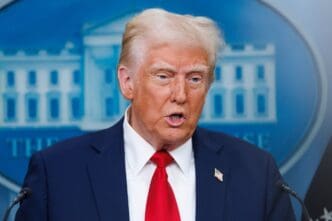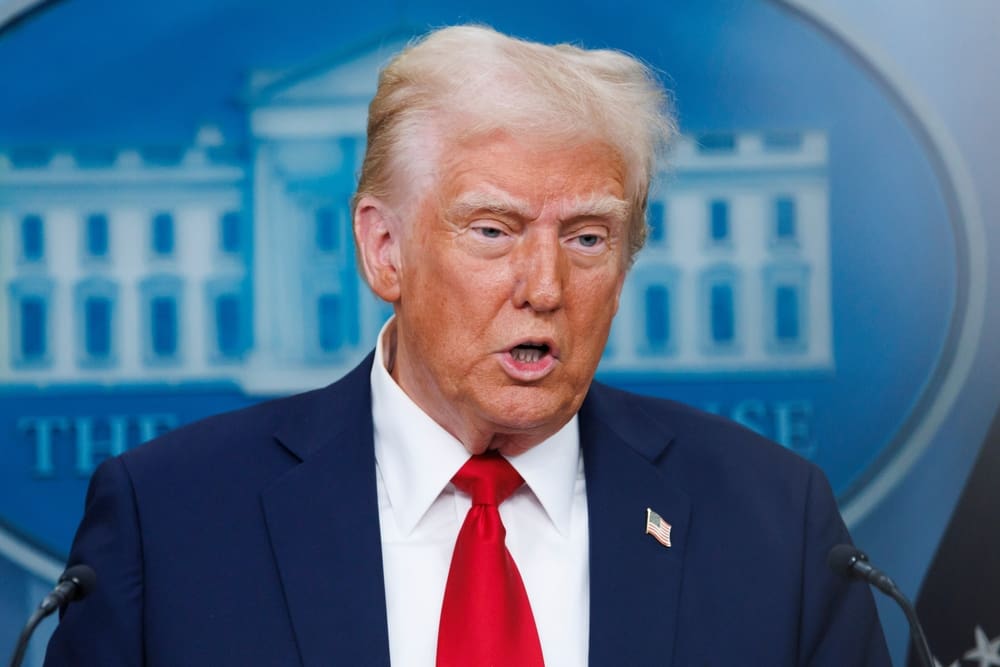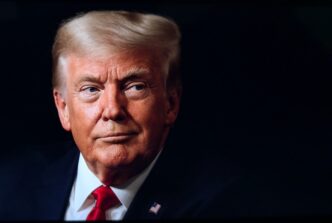Washington, D.C. – President Donald Trump’s administration is facing mounting economic pressure as its policies on trade and government spending contribute to a soaring national debt, rising interest rates, and growing instability in financial markets, according to a new economic analysis. With a July 9, 2025, deadline looming for new international trade deals, uncertainty over the President’s tariff strategy is compounding concerns over the nation’s fiscal health.
The U.S. national debt has now reached $36 trillion, a figure that represents 123% of the country’s total annual economic output (GDP). This debt-to-GDP ratio is the highest level recorded since the end of World War II in 1946 and places the United States among the most indebted major economies globally.
A recently passed budget reconciliation bill, which President Trump has referred to as the “big beautiful bill,” is projected to add another $3 trillion to the national debt over the next decade. In 2024 alone, the federal government had to borrow $1.8 trillion to cover spending that exceeded tax revenues, creating a budget deficit equal to 6.2% of GDP. Official projections indicate this deficit is on track to grow over the coming years.
This high level of government borrowing has had a direct impact on the cost of money for both the government and the public. The interest rate on ten-year U.S. government bonds, a key benchmark, has surged from just 0.5% in mid-2020 to 4.3% today. This increase in government borrowing costs has a ripple effect across the economy, leading to higher interest rates for consumer mortgages and corporate loans.
For decades, the United States has benefited from what economists call an “exorbitant privilege,” where the U.S. dollar serves as the world’s primary reserve currency. This status has historically made U.S. government bonds, or “treasuries,” a top safe-haven investment for global financial institutions, allowing the U.S. to borrow vast sums of money at favorable rates and making imported goods cheaper for American consumers.
However, analysts warn this privilege is being eroded. The unpredictable nature of President Trump’s tariff agenda is reportedly unnerving investors, who find it costly to adjust supply chains in response to sudden policy shifts. When the scope and scale of future tariffs are unknown, the rational response for many businesses is to halt investment, slowing economic activity. This wavering confidence is reflected in the U.S. dollar, which has lost 8% of its value against other major currencies since the start of the year.
The most immediate risk, according to the analysis, is a sudden spike in the yields on government debt. When yields rise, the market value of existing, lower-yield bonds falls, creating a powerful incentive for investors to sell their holdings to avoid losses. A rush of sellers can become a self-reinforcing “stampede,” potentially destabilizing markets.
Such an event nearly occurred in early April after new tariff announcements triggered a jump in U.S. bond yields. One senior central banker warned at the time that financial markets had been close to a “meltdown” before the tariffs were abruptly paused on April 10, a move allegedly made in response to falling bond and stock prices.
In a sign of shifting sentiment, foreign central banks have reportedly begun selling off their holdings of U.S. treasuries since March, often choosing to purchase gold as an alternative safe asset. While the dollar is unlikely to be replaced as the world’s top currency soon, due to a lack of strong alternatives, its reputation has been tarnished. On President Trump’s watch, this erosion of confidence has left the financial system more vulnerable and made borrowing more expensive for the entire country.








